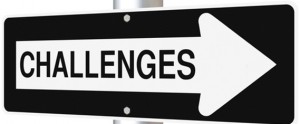Let’s look at Vinita’s (name changed) story:
After completing her M.Sc. in Statistics, Vinita worked as a call center executive for more than three years. Two year back, she had to take a break from career to take care of her child. Now the child is 2 years old and Vinita is thinking of taking up a job. She has been reading about analytics and the potential it holds as a career in coming years. She has always loved maths & stats and thought this was her calling. She makes up her mind to pursue analytics as a career.
A year later:
Vinita has undergone a few training and open courses. She has applied to more than 100 jobs after that and hasn’t got many calls. The ones she got never moved ahead after the first round. She is feeling helpless and re-thinking about her efforts over the last year. What is going wrong?
Can you relate to the problem at hand? A lot of people (especially women) take a 1 – 3 year break for various reasons during their career. Common reasons being family commitments or pursuing entrepreneurship.
Lately, I have come across quite a few people who want to change their domain to analytics / data science after the break. It is a good progression, if you have been in generic roles in past. All the research about shortage of data science professionals acts as a catalyzer in making that decision. However, majority of people end up making no head way in the right direction, despite putting in a lot of hard work.
The good news is that once you make a transition, there are a lot of opportunities which come your way. It is just that the industry is hesitant to offer roles to people with no analytics experience.
How can a person without past experience make a break into analytics? I’ll try and give my perspective to this question in this article. But, before getting to the answer, let us understand the challenges which come in way of a transition.
The challenges in making a career transition:
Challenges during learning the subject
You face these challenges when you start learning the subject. This is just the start of the journey.
1. Data Science and statistics are not easy subjects – If you don’t have a flair for statistics or quantitative subjects, you should just stop your journey here. Each person has his / her own strengths and if quant subjects are not one of them, this stream is not for you. It is surprising how many people ask “Do I need to be good at stats in order to be a good analyst?”. If you face this question in your mind, you are better not pursuing this venture.
2. Even if you understand it, there is a lot of dirty work you need to do – For the fortunate ones who have a flair for quant subjects, only skill means nothing in a data science career. You need to put in a lot of hard work. So, if you are undergoing a MOOC, with out taking the exercises, you are setting yourself up for a tough ask. Without the exercises and experience of cleaning datasets, you can not expect companies to make you an offer. So, if you understand the subject – practice and practice a lot!
3. The number of tools out there is overwhelming – As a beginner, a lot of people are usually confused about which tool to follow. They would ask whether to learn SAS or R or Python, even when they have started journey on one. Hadoop and Spark also sound interesting. Oh, did I mention Matlab and Octave used in the popular Machine Learning course? This confusion can be devastating to people – the debates in industry do not help. It takes a lot of time and counselling to help people understand that success as a data scientist is not about learning a tool, but learning and applying a concept. Any tool they pick up is a good starting point (Of course, I am assuming they are not trying to do data science in Fortran!)
Challenges after completion of some learning / training
If you thought start was difficult, this is going to get more difficult!
4. No one is ready to give you a break – About 90% of hiring in industry (at least in India) happens from two channels – experienced lateral hires or freshers from top tier institutes. So, if you don’t belong to any of this category (which is likely the case, if you are transitioning), you will feel that you are against a wall.
5. It is not about the tool or training or certification – A lot of people think that once they are certified professionals of a tool, life would be easy. Sorry to wake you up, that would not be the case. Hiring of candidates never happens on the basis of tool or training you know. It usually happens through test of problem solving and structured thinking – through case studies, role plays and guess estimates. Not many trainings prepare you for them.
6. Communication skills matter more than you think – People don’t associate communication skills with rejection in data science roles. They expect that if they are good in technical part of the subject, they will ace the interview. Sorry! doesn’t happen. Ever been rejected with in an interview, where the interviewer said thank you after listening to your introduction? or over a telephonic call? Make your friend with good communication skills hear your intro and ask for honest feedback!
There can be a few challenges after you get your first job, but we will reserve them for some other post.
Guidelines to improve your chances of getting a break
Now that you understand the challenges and would have seen which ones would apply to you, here are ways to improve your chances of getting a break:
Define your objective and the path:
1. Be clear about who you want to become – There can be a lot of varied roles in data science industry. A MIS professional, data visualization expert, predictive modeler, machine learning expert, data scientist are all roles and words with overlapping functions. Getting into a reporting role would be easier than becoming a predictive modeler than a machine learning expert. So, until and unless you are clear about what / who you want to become, you will stay confused about the path to take and skills to hone.
What to do, if you are not clear about the differences or you are not sure what should you become? Talk to people in industry, take mentorship from a few people – data science community loves people asking questions. One of the person I know spent an hour with each of these professionals
2. Make your tool selection and then stick with it – I have mentioned before that hiring does not happen on the basis of your knowledge about the tool. Then why am I saying to make a tool selection? Because, you will need one tool to learn and implement the concepts. As long as it is one of the mainstream tools, just go ahead with it. Don’t over analyze SAS vs. R or Python.
3. Give it at least an year, two in case you are not from Tier I institutes – Please understand the transition into anlaytics roles will not happen overnight. You need to give yourself time to learn new tools and skills, apply them to a few problems, improv eon your understanding and get a break. If you don’t have resources to learn for this long, take up some work on the side. For women returning from break due to children, you can start picking up things as soon as the child starts a play school. It gives you a gradual transition.
Define your learning schedule:
4. Decide how much time will you be able to provide daily / weekly? Make sure you get into daily habit of learning and practicing. Regular practice will give you a lot of confidence and makes a lot of mundane essential tasks (e.g. importing libraries or packages, syntax, formats) a cakewalk during technical interviews.
5. Identify the right courses and training – Look for the reviews, past placement rates, the time requirements from the courses you are taking. If this information is not available in open, talk to people who have undergone this course or mentors in industry and take their opinion. Remember that each person has his / her own learning style – some would want lucid material and exercises to start, others would want challenges. Know what you want and pick those courses which offer that style.
6. Define milestones and commit to them – Once you know the courses to complete, create a learning path with milestones and deadlines. Regularly check yourself against the plan and make sure you are looking at the larger picture and the progress.
Execution of learning plan:
7. Focus on practical applications: While undergoing courses and trainings, focus on the practical applications of things you are learning. Make sure you do exercises and assignments to understand the applications. Work on a few open data sets and apply your learning. Even if you don’t understand the math behind a technique initially, understand the assumptions, what it does and how to interpret the results. You can always develop a deeper understanding at a later date.
8. Showcase your work in analytics networks and communities – Create GitHub profile and upload your work, participate in Analytics Vidhya Discuss, take part in Kaggle competitions and follow the discussions, become part of relevant groups on Linkedin, blog about your work and perspective.
9. Network heavily – Attend industry events and conferences, popular meetups in your area, participate in hackathons in your area – even if you know only a little. You never know who, when and where will help you out!
10. Prepare flawlessly for your interview – What is the use of all this hard work, if you screw up the interview. If you prepare well, analytics interviews can be easy to crack. Read our definitive guide, case studies, puzzles and guess-estimates and plan well before the interview.
End Notes
I hope I have done justice to remove confusion from mind of people making a transition into analytics. In summary, people coming back from a break might find it a bit overwhelming, but the sooner you get into action, the better it is. The good news is that once you make a successful transition, you see opportunities chasing you around!
Do you have any more tips to help people making a transition? Please share them through comments below. If you have any more questions on the topic, feel free to shoot them in our discussion portal.











Wonderful article Kunal! Seriously its the best read I have undergone in the past one month. Thanks for sharing your knowledge in this beautiful post. Aditya
If I have read an informed blog like this one, may be I would not have invested one year of my life and money in pursuing a post grad cert in analytics. I am a living witness to everything said in this blog. It seems someone like me will need another 1 or 2 yrs of hard work to make a break in to analytic. At mid 40s I do not have the luxury of time and I hope others thinking of transition to analytics will plan well before taking the plunge.
Superb article Kunal. It has a lot of good information for people to follow, if they are serious about their analytics career
Good post Kunal! It's a must read for all transitioners moving into analytics.